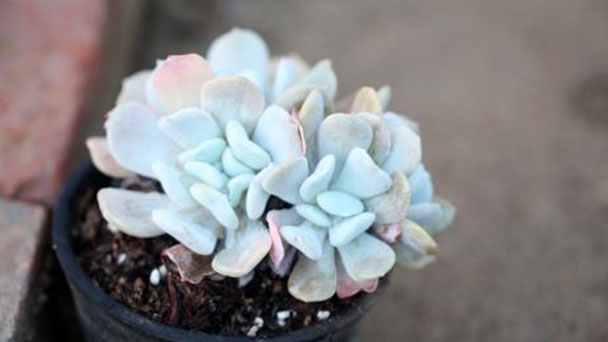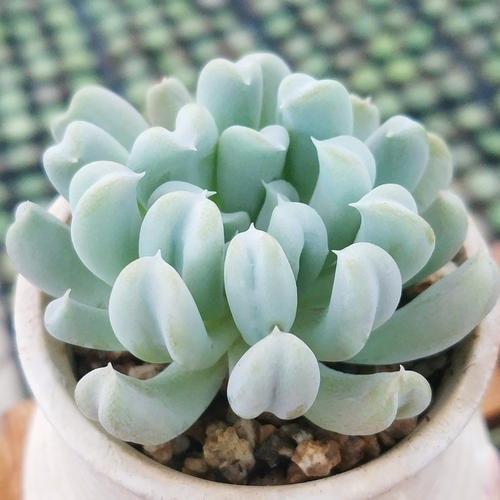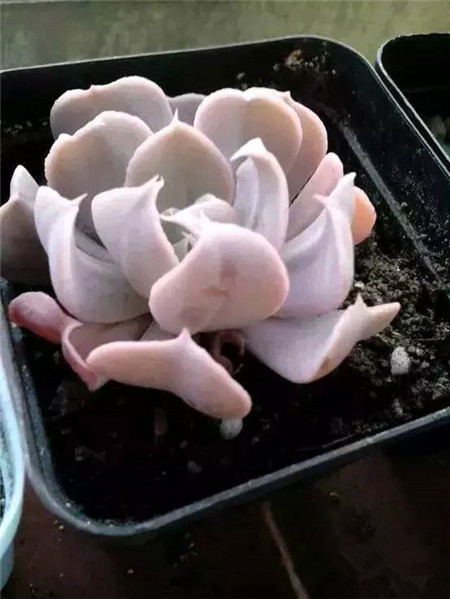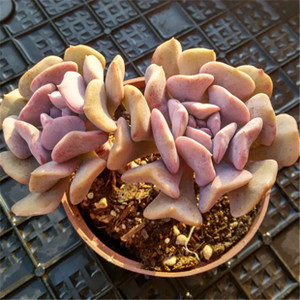Common diseases and control methods of Echeveria Runyonii
Written by Maggie
Sep 18 2021

When Echeveria Runyonii suffers from rust, we need to strengthen its ventilation management, and need to clean with clear water plant, spraying carbendazim control.As developing coal disease, we also need to clean plant, and for the replacement of the soil, spraying chlorothalonil fungicide.As black rot and root rot rotten part, first of all we need to handle to replace the soil, irrigation with disinfection, etc. It is good to control.

1, Rust of Echeveria Runyonii
Echeveria runyonii has a strong vitality, but if it is not properly maintained and the environment is not ventilated, it is easy to suffer from rust. The leaves will appear hairy, which will affect the growth of the plant in the sun. The plant needs to be washed with clean water once, the ventilation environment needs to be maintained, and the plant needs to be sprayed with polycyllium and other drugs for prevention and control.
2. Bituminous coal disease of Echeveria Runyonii
If echeveria runyonii (Echeveria Topsy Turvy) suffers from bituminous coal disease, its leaves will show irregular black spots and then gradually spread. At this time, the plant also needs to be cleaned and treated. It is better to replace the soil and restore maintenance of the plant, and the plant should be sprayed with bactericide such as chlorothene.

3. Black rot of Echeveria Runyonii
In general, in common diseases and control methods of Echeveria Runyonii, do not give it a lot of water and fertilizer, nor sprinkle water and fertilizer on the plant. It is easy to cause it to suffer from black rot, leaves will become black rot. It needs to be treated immediately, and the plant should be sprayed, soil spraying disinfectant prevention.
4. Root rot of Echeveria Runyonii
Echeveria Runyonii (Echeveria Topsy Turvy) is also prone to root rot when growing. Its roots will rot gradually, making it impossible for its plants to grow in the soil. Eventually, the plants will wither and die. The rotting roots need to be cut off immediately, and it is best to replace the soil, and the soil should be poured into the carbapenem, chlorothalonil and other agents.

Latest Updated
- Benefits of Bugleweed - 7 Science-backed Health Benefits
- Bugleweed Dangers & Side Effects - Is It Poisonous?
- How to Plant Evergreen Trees - What You Should Know
- When to Plant Evergreens - Grow Guide for Evergreen Trees
- 12 Wonderful Evergreen Shrubs for Your Garden
- 12 Popular Evergreen Plants with Pictures for Beginners
- When And How To Prune A Lilac Bush Like a Pro
- How to Grow & Care for Lilac Vine (Hardenbergia Violacea)
- Japanese Lilac Tree (Syringa Reticulata) Care & Propagation Guide
- Shumard Oak Pros and Cons - What to Know
Popular Articles
- Winter maintenance of Antirrhinum Majus
- How to Grow Terminalia Mantaly Tree
- How to Grow and Care for Crossostephium Chinense
- How to grow Antirrhinum Majus in spring
- Peristeria Elata (Dove Orchid) Profile: Info & Care Guide
- Underwatered Snake Plant (Sansevieria Trifasciata) - Signs And How To Fix
- How to Care for Brazilian Jasmine Plant (Mandevilla Sanderi)
- How to Grow & Care for Graptopetalum Purple Delight in Summer
- Rosa Chinensis (China Rose): Plant Growing & Care Tips
- How to Care for Baby Sun Rose (Aptenia Cordifolia)